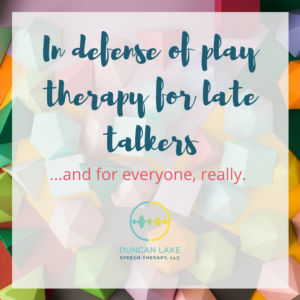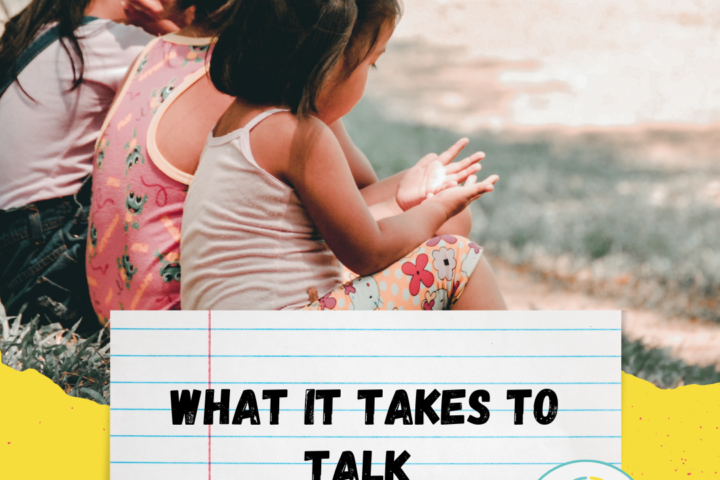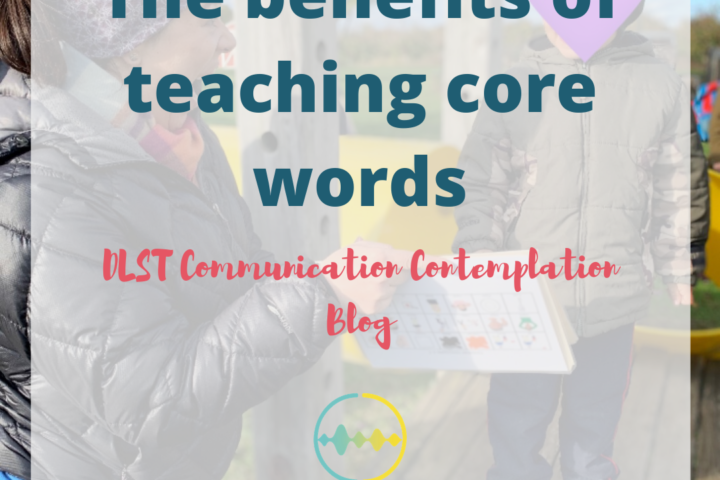When you think of a speech therapy session, what image pops into your head? I’m sure you probably think of the speech-language pathologist sitting at a table across from the client working diligently on a task in quiet contemplation.
However, when it comes to our younger kiddos (and often older ones, too), sitting at a table and skill-drilling them isn’t perhaps the best or most realistic idea. For our late talkers, speech-language therapy is almost always play-based. From the outside, play-based therapy literally looks like the speech-language pathologist just playing with the child. This often times shocks parents- how can you be making any therapeutic gains with a late talker if you’re not “doing” therapy!?
Rest easy, friends. Play lends itself extremely well to therapy for our littlest clients, and is the much-preferred model of therapy for this age for a number of reasons.
Parents and caretakers of small children, have you ever tried to force your child to do something that they’re pretty opposed to doing? It is not typically very successful, right? The same goes for speech-language therapy. The kiddo’s buy-in to a therapy session will always be EXPONENTIALLY better if it involves doing their favorite tasks. Does your kiddo like to do puzzles? Play with dolls? Dance? Your speech-language pathologist will do any and all of these if it means the kiddo is interacting with the SLP. Without buy-in or participation with the SLP, no gains will be made.
Additionally, play-based therapy helps to maintain attention to the task. This is the same for adults, too. Participating in a preferred activity is a sure-fire way to ensure that our client’s attention will be on us! Because attention is a pre-requisite to language acquisition, it’s very important to make sure that kiddos are focused. Hence the play!

Plus, using play helps with carryover because it’s natural. If the therapist joins in on an activity that the kiddo does all the time, it would stand to reason that the skill would carry-over when the therapist is not around. In a sit-at-a-table, skill-and-drill session, the activity is very compartmentalized and isolated and doesn’t translate into the home.
So, how does this work?
Well, any activity can address a variety of goals for our late talkers. Let’s see. I’m a big fan of Melissa & Doug puzzles, so let’s use that as an example. How can an SLP use this activity to promote language development?
-
Producing age-appropriate sounds: The SLP could talk about animals and their sounds. For beginning sounds, they could model “mooo” for /m/ or “pig” for /p/. The more it’s modeled, the more likely it is that the kiddo will start to imitate the sound.
-
Requesting via sign or AAC: Puzzles lend themselves nicely to this. The SLP can have the kiddo request for more pieces by signing or indicating on a core board/other AAC device. There’s lots of fun vocabulary involved with animals as well – actions, colors, all sorts of stuff! All of this can be modeled with sign or other forms of AAC.
-
Indicating yes/no: The SLP could place a piece in the wrong spot to encourage the kiddo to say, “No!”
-
Modeling actions: The SLP could model actions done by the animals such as “run” or “jump.” The more these actions are modeled, the more likely it is that the kiddo will imitate.
If you are a parent of a child who is in speech-language therapy and see the SLP and your child playing, don’t worry. Lots and lots of therapy is happening! Join in and have your SLP talk you through some of it so that you can carry over strategies at home!




